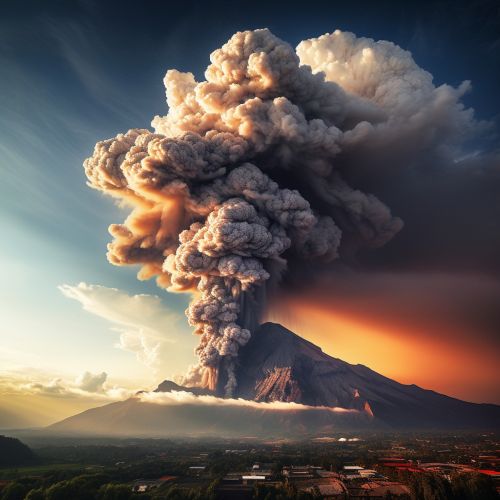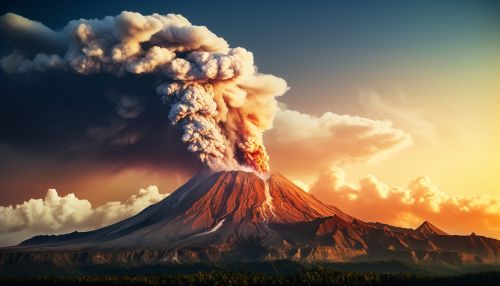The Science of Volcanic Eruption Prediction and Monitoring
Introduction
Volcanic eruptions are natural disasters that can have devastating effects on human societies and ecosystems. The science of predicting and monitoring these eruptions is a complex field that involves a variety of disciplines, including geology, seismology, and chemistry. This article will delve into the intricacies of this science, exploring the methods used to predict eruptions, the technologies employed in monitoring volcanic activity, and the challenges faced by scientists in this field.
Volcanic Eruptions: An Overview
Volcanic eruptions occur when there is a sudden release of energy and materials from a volcano. This can include lava, ash, and gases such as sulfur dioxide and carbon dioxide. The type and intensity of an eruption can vary greatly, depending on factors such as the composition of the magma, the structure of the volcano, and the tectonic setting.


Predicting Volcanic Eruptions
Predicting volcanic eruptions is a complex task that involves analyzing a variety of data and indicators. This can include seismic activity, ground deformation, gas emissions, and changes in the volcano's hydrothermal system.
Seismic Activity
One of the main indicators of an impending volcanic eruption is increased seismic activity. This can include both earthquakes and volcanic tremors, which are continuous vibrations caused by the movement of magma beneath the surface. Seismographs are used to detect and record these vibrations, providing valuable data for scientists.
Ground Deformation
Another key indicator is ground deformation, which can occur when magma accumulates beneath the surface, causing the ground to swell or tilt. This can be detected using a variety of methods, including GPS measurements, satellite radar imaging, and tiltmeters.
Gas Emissions
Changes in gas emissions can also provide clues about an impending eruption. For example, an increase in the emission of sulfur dioxide or carbon dioxide can indicate that magma is rising to the surface. Gas samples can be collected directly from the volcano, or remotely using instruments such as spectrometers.
Hydrothermal System Changes
Changes in the volcano's hydrothermal system, such as an increase in the temperature or acidity of hot springs and fumaroles, can also indicate that an eruption may be imminent.
Monitoring Volcanic Activity
Monitoring volcanic activity is crucial for predicting eruptions and mitigating their impacts. This involves continuous observation and data collection, using a variety of technologies and methods.
Seismology
Seismology is a key tool in volcanic monitoring. Seismographs are used to detect and record seismic activity, providing valuable data on the movement of magma beneath the surface.
Geodesy
Geodesy involves the measurement and interpretation of the Earth's shape and gravitational field. In the context of volcanic monitoring, it can be used to detect ground deformation caused by the accumulation of magma.
Gas Monitoring
Gas monitoring involves the measurement of gases emitted by a volcano, such as sulfur dioxide and carbon dioxide. This can provide valuable information on the state of the magma and the likelihood of an eruption.
Remote Sensing
Remote sensing technologies, such as satellite imagery and radar, can also be used to monitor volcanic activity. These technologies can provide a wealth of data, including information on ground deformation, gas emissions, and thermal activity.
Challenges in Volcanic Eruption Prediction and Monitoring
Despite advances in technology and understanding, predicting and monitoring volcanic eruptions remains a challenging task. One of the main challenges is the inherent unpredictability of volcanic activity. While certain indicators can suggest that an eruption may be imminent, it is often difficult to determine exactly when or how it will occur.
Another challenge is the logistical difficulty of monitoring volcanoes. Many volcanoes are located in remote or inaccessible areas, making it difficult to install and maintain monitoring equipment. Additionally, monitoring requires continuous data collection and analysis, which can be resource-intensive.
Finally, there is the challenge of communicating and responding to volcanic hazards. Even with accurate predictions and monitoring, it can be difficult to effectively communicate the risks to the public and to coordinate evacuation and response efforts.
Conclusion
The science of volcanic eruption prediction and monitoring is a complex and challenging field. It involves a variety of disciplines and technologies, and requires a deep understanding of volcanic processes. Despite the challenges, advances in this field have the potential to save lives and mitigate the impacts of volcanic eruptions.
